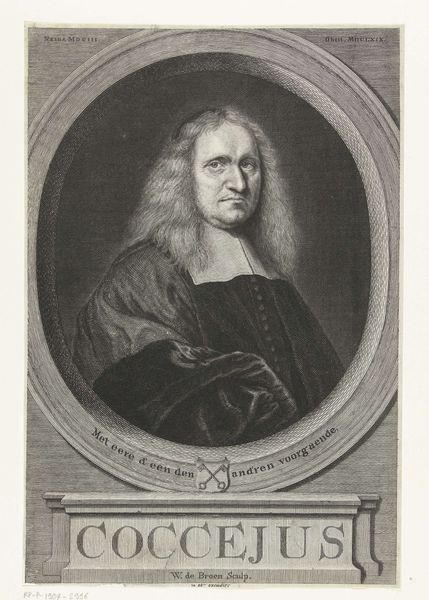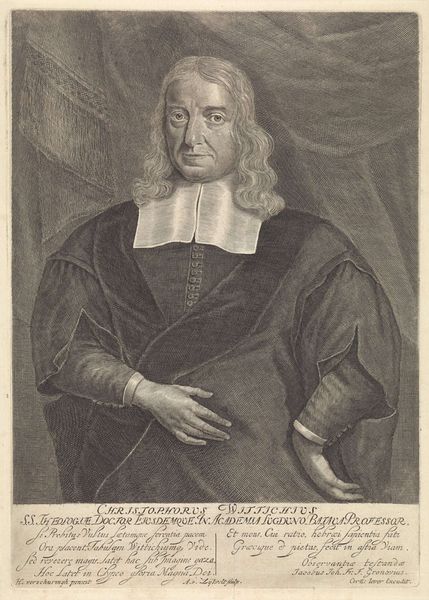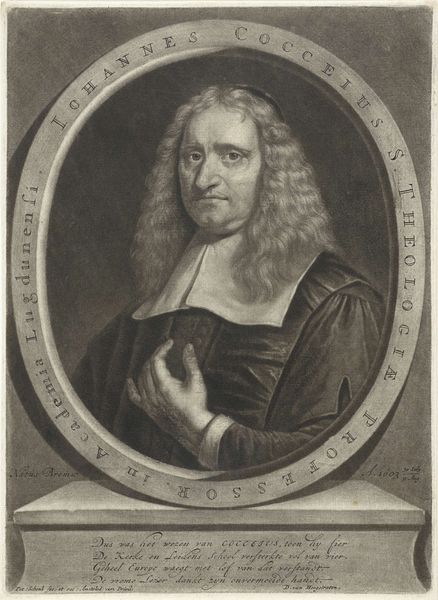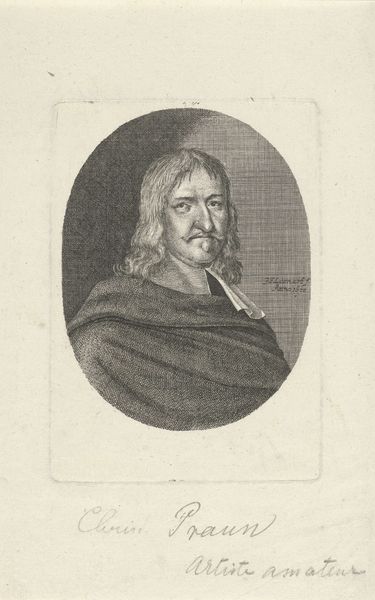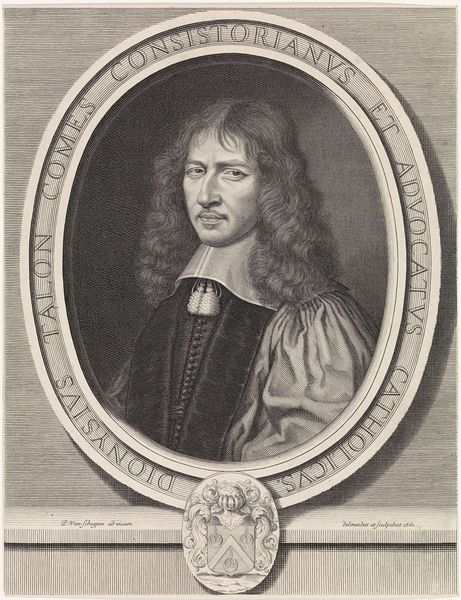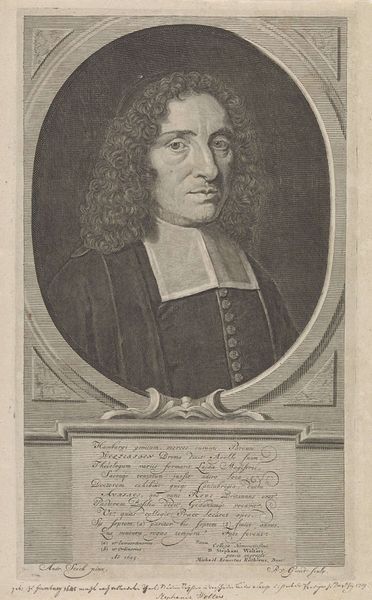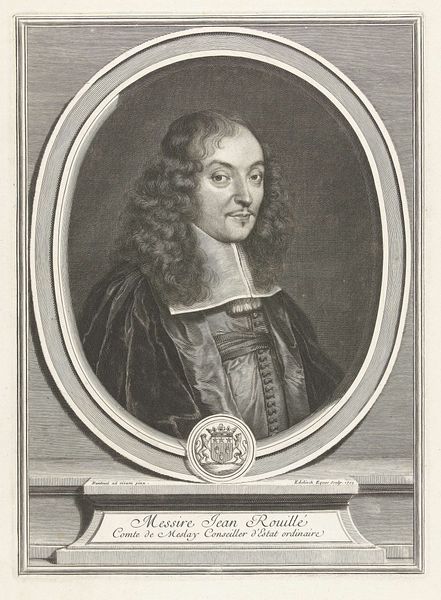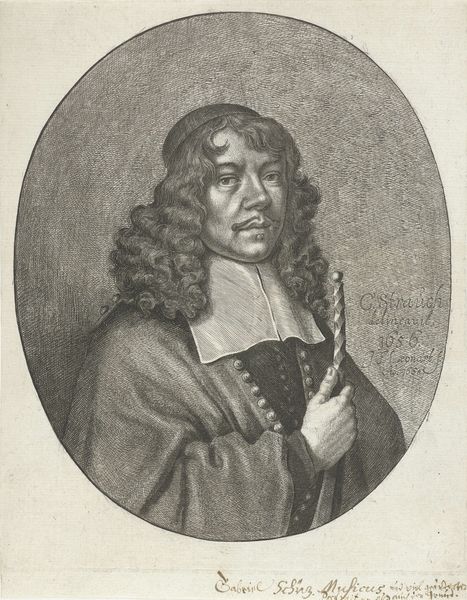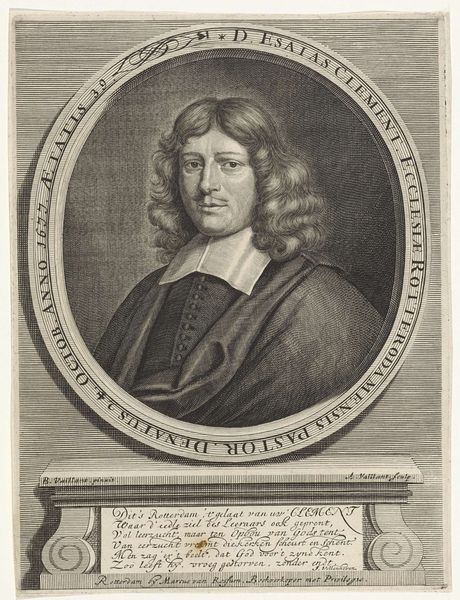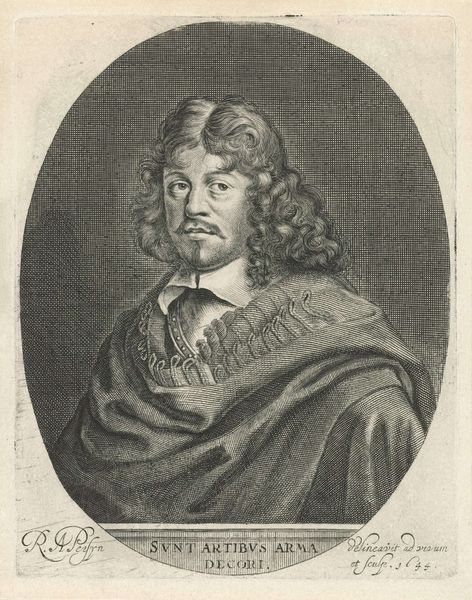
print, etching, engraving
#
portrait
#
baroque
# print
#
etching
#
engraving
Dimensions: height 295 mm, width 217 mm
Copyright: Rijks Museum: Open Domain
Curator: This piece, titled "Portret van Johannes Cocceius met handschoenen," offers a compelling glimpse into 17th-century Dutch society. It's attributed to Jonas Suyderhoef and dates from sometime between 1668 and 1693. Editor: My first impression is one of intense formality. There's a rigidness to the composition, a kind of deliberate stillness conveyed through the etching and engraving work. The subject appears somewhat severe. Curator: The work's materiality tells us much. Engraving and etching, these reproductive processes, democratized images in a way. A professor like Cocceius, theologian by trade, could disseminate his image, and by extension, his ideas. The tactile nature of the print—its accessibility— speaks volumes. How was the paper made, distributed, and priced? Editor: That’s a valuable point. We’re looking at more than just an individual portrait, but an emblem of scholarly authority circulating within a specific social context. The Baroque style further emphasizes his importance. It wasn't just about accurate representation, it was about constructing a particular persona. Think about the power dynamics at play with who commissioned this and its intended audiences. Curator: Absolutely, and the act of wearing gloves itself denotes a certain level of social standing, hinting at particular labor conditions required to maintain one’s material distance. I am keen to analyze what dyes and inks are at play, how their distribution might connect colonial projects. Editor: And considering the socio-political climate of the Dutch Republic at that time, especially religious disputes, such portraits played a role in consolidating and promoting specific theological perspectives. Curator: True, even something as seemingly mundane as the paper source carries with it implications concerning Dutch mercantile dominance and international relations at the time. Editor: Well, I am left thinking about the function of art within historical moments like these—how imagery could legitimize intellectual authority or theological viewpoints within a fractured landscape of power. Curator: And I consider how that power is inherently bound up with resource chains and distribution methods – all the laboring bodies who touched the print that lies behind the final subject matter of it, literally.
Comments
No comments
Be the first to comment and join the conversation on the ultimate creative platform.
